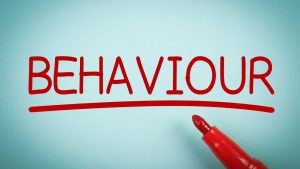As the online marketplace expands and consumer behaviors shift, companies are working hard to stay relevant and keep customers interested. Innovative marketing strategies have become crucial in the digital world, helping businesses grab and keep consumer attention.
Evolution of Promotional Tactics in Digital Marketing
In the early days of online marketing, strategies were relatively straightforward, often mimicking traditional advertising methods. Today’s promotional tactics in digital marketing are characterized by their adaptability and creativity. Businesses are using data analytics to understand consumer preferences and tailor their promotional strategies accordingly. This shift has led to more personalized and targeted promotions, which resonate more effectively with individual consumers.
Analyzing Effective Promotion and Bonus Strategies

Promotion strategies are meticulously crafted to not only attract customers but also to create lasting engagement and loyalty. Deliberately understanding how various businesses, ranging from e-commerce sites to services providers, use these tactics is necessary for understanding their effectiveness.
1. E-commerce
Promotional strategies in the e-commerce space tend to consist of discounts, limited-time offers, and loyalty programs. These promotions are designed to encourage immediate purchases and repeat business. For instance, flash sales or special event-related discounts create a sense of urgency, driving up sales in a short period. Loyalty programs, on the other hand, focus on long-term engagement by rewarding repeat purchases, thereby fostering a loyal customer base.
2. Service industry
The service industry, particularly online platforms, adopts a different approach. Here, promotions are often centered around free trials or introductory offers. Such strategies allow potential customers to experience the service without commitment, reducing the perceived risk and encouraging them to eventually subscribe or make a purchase.
3. Online entertainment
In the online entertainment and gaming sector, promotions and bonuses take on a more nuanced role. For instance, in the competitive iGaming marketplace, strategies like the 32 Red casino bonus offer stand as a proof of how targeted promotions can successfully attract and engage customers. By offering bonuses, free plays, or exclusive access to new games, these platforms create an engaging environment that encourages users to explore more and stay longer. Another effective strategy seen across various sectors is the use of referral bonuses. By incentivizing existing customers to bring in new ones, businesses create a network of organic promotion.
4. Social media
Social media promotions have also gained immense popularity. Promotions such as contests, giveaways or special discount codes on social platforms like Instagram and Facebook not only increase brand recognition but also encourage consumer engagement. They encourage user participation and sharing, thereby exponentially increasing the reach of the promotional campaign.
Measuring the Impact of Promotions on Consumer Behavior

The effectiveness of digital marketing promotions is fundamentally assessed by their impact on consumer behavior, including facets like user acquisition, retention rates, and brand loyalty.
1. User Acquisition
Promotions, particularly those offering initial incentives, play a crucial role in attracting new customers. Their success can be measured by increased sign-ups, website traffic, and first-time sales, marking their potency in converting potential customers during the decision-making phase.
2. Retention Rates
Beyond attracting new users, retaining them is critical. Successful promotional strategies, such as loyalty programs and ongoing bonuses, help maintain customer engagement. High retention rates, indicated by repeat purchases and consistent interactions, demonstrate the efficacy of these promotions in creating lasting consumer relationships
3. Brand Loyalty
The ultimate aim of these strategies is to cultivate deep-rooted brand loyalty, where customers not only prefer but actively advocate for the brand. This level of loyalty can be gauged through Net Promoter Scores, customer satisfaction feedback, and social media engagement, highlighting loyal customers’ role in enhancing the brand’s reputation and reach.









Leave feedback about this